How to Use an Inhaler for Pneumonia
If you have ever experienced pneumonia, you know that it is an infection that can truly knock the wind out of your sails. Pneumonia is far worse than what we might call a “little bug” or a typical winter cold. It can cause extreme fatigue, and it is not the type of sickness most people can simply “work through” and carry on with their normal, day-to-day activities.
We tend to show up at work even when we have sniffles or a mild cough; many have suffered through a social commitment with a sore throat or seasonal allergies. However, pneumonia is a “cancelled plans” and “call in sick” infection. It can stop even the healthiest adults right in their tracks, sending them straight to the bed for a few days of Netflix (or nothing but sleep).

Pneumonia is an infection that leaves patients desperate for some type of relief; you may be prescribed different medications depending on the type of pneumonia you have (we will get to that below). However, your doctor will likely advise the need for rest, rest, and MORE rest.
Because pneumonia can make it difficult for some patients to breathe, an inhaler may also provide some welcome relief when it comes to opening your airways. We will explain how inhalers work and how they might be useful in treating pneumonia. Be sure you consult your own physician before using an inhaler for pneumonia or any other illness or lung infection.
CAUSES AND TYPES OF PNEUMONIA
People develop pneumonia after exposure to three different things: bacteria, a virus, or a fungus.
We will start with the most common form: bacterial pneumonia, which infects almost a million Americans each year.
Bacterial Pneumonia
A germ that lives in the upper respiratory tract called Streptococcus pneumoniae is to blame when it comes to the development of bacterial pneumonia. As you might guess, this germ is also the cause of strep throat, but it is linked to everything from pneumonia to toxic shock syndrome, impetigo, and scarlet fever as well.
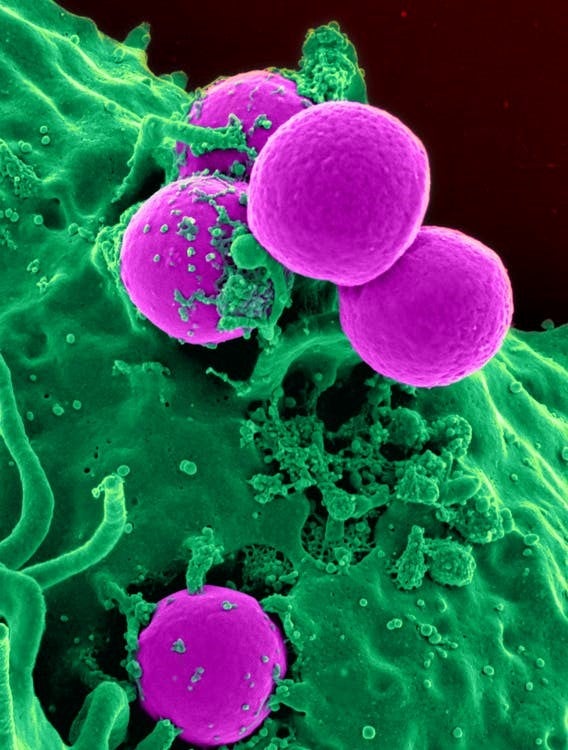
Bacterial pneumonia usually develops after the flu or other virus, and it is typical for it to only affect one part (lobe) of the lung. However, a few other bacteria can cause pneumonia as well, and the type of bacteria will also dictate what type of antibiotics can best fight the infection.
Bacterial pneumonia can develop as a patient is recovering from surgery; it is also common in people with respiratory illnesses or weakened immune systems.
Viral Pneumonia
When we think of pneumonia caused by a virus, we most often associate it with influenza. However, this is the most common way adults develop viral pneumonia, and children are prone to it when they experience Respiratory syncytial virus (RSV).
A viral case of pneumonia is usually shorter in duration and less severe than bacterial pneumonia; however, this does not mean it should not be taken seriously. Those with existing lung or heart conditions and pregnant women are at especially high risk when it comes to viral pneumonia. Therefore, you should consult your physician immediately if you suspect you may have it.
Fungal Pneumonia
The cause many people are unaware of when it comes to pneumonia is a fungus. Fungal pneumonia is common in people with weak immune systems, and it can occur after exposure to contaminated soil or even bird droppings.
People treated with certain long-term medications, such as those used in HIV patients, cancer patients, and transplant patients, often have a weakened immune system that will make them susceptible to fungal pneumonia.
TREATING PNEUMONIA: MEDICINE, REST, INHALERS, AND MORE
Pneumonia treatments may vary depending on the type of pneumonia you have, your symptoms’ severity, age, and other health complications.
Some people can recover from pneumonia with adequate rest at home, whereas more serious pneumonia cases may require hospitalization and even IV antibiotics. The most important thing to bear in mind is that you should always follow the specific instructions given by your physician.
Medicines to Treat Pneumonia
If a bacterial infection caused your pneumonia, your doctor would prescribe an antibiotic. As is always the case with antibiotics, you must take all of the medication prescribed by your doctor. Sometimes people with pneumonia begin to feel better and think they no longer need the antibiotic. However, if you fail to complete the course of antibiotics as prescribed, your chances increase that the infection will return.
Viral pneumonia cannot be treated with an antibiotic. However, your physician may be able to prescribe an antiviral medicine that will help to ease your symptoms. Additionally, most physicians will recommend an over-the-counter medication like acetaminophen for a fever. Be sure you ask your doctor before taking any OTC medications along with your prescriptions.
An inhaled corticosteriod is widely used for respiratory infection. It has immunosuppressive and anti-inflammatory effects and can even effectively treat severe pneumonia and severe asthma symptoms. Nebulization treatments or other similar breathing treatments can help loosen any mucous in the lungs and allow you to breathe better.
Rest to Treat Pneumonia
There is no substitute for rest when recovering from pneumonia. You may feel extremely fatigued, and to recover, you should rest for as long as possible. This means staying home from work if you are able, canceling social engagements, and leaning on family and friends for support with everyday tasks like grocery shopping.
While it is tempting for many active people to try and “motor through” pneumonia, you could end up running yourself so ragged you end up getting even worse.
In addition to rest, you should focus on taking in as many fluids as possible. Your symptoms may be alleviated by steam, too. Some asthma patients like to use a humidifier or even sip on hot tea.
Inhalers to Treat Pneumonia
Your physician may suggest an inhaler if you are having a particularly difficult time breathing because of pneumonia or another respiratory infection. For asthma patients and others familiar with an inhaler, this will be a familiar process. However, if you have never used an inhaler, you may have questions and concerns about how this works.
Rest assured, inhalers for pneumonia and breathing treatments are incredibly easy to use and do an effective job of opening your airways to alleviate much of the discomfort associated with infections like pneumonia.
INHALERS: TYPES, USES, TIPS, AND MORE
An inhaler is a simple device that brings medicine directly to your lungs via your own breathing; they are commonly used to treat a wide variety of respiratory conditions, from asthma to emphysema.
The main type of inhaler most people are familiar with, even if they have never used one, is a metered-dose inhaler.
A metered-dose inhaler releases aerosol spray into your mouth once you activate it, placing your thumb at the bottom of the device and then pressing down at the top with your forefinger. You will pump the inhaler one or two times, depending on what your doctor recommends and the aerosolized antibiotics you were prescribed.
A spacer can also be used with a metered-dose inhaler; this attachment holds the medicine in place until you are ready to inhale it, meaning the delivery of the medicine to your lungs is more effective.
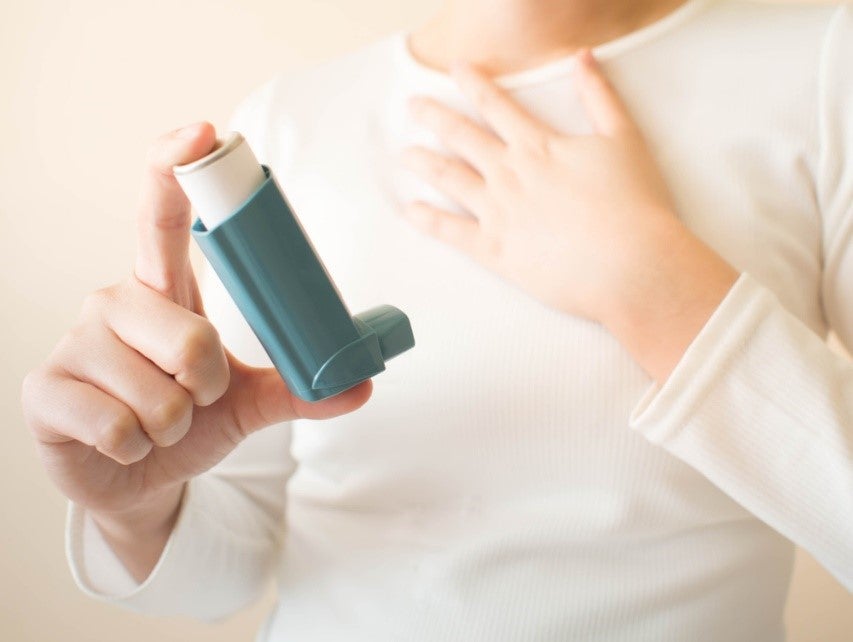
Another type of inhaler that can be used to relieve respiratory conditions is a dry powder inhaler. This device allows you to pull the medicine in powder form into your lungs when inhaled through the mouthpiece.
Medicines Used with Inhalers
If your doctor suggests you use an inhaler as you recover from pneumonia, you will likely have a prescription for ProAir, Proventil (albuterol), or Ventolin.
All of these medications may be helpful when it comes to loosening phlegm and opening up your airways, making it easier for you to breathe. This kind of relief is helpful in numerous ways, not only helping you to breathe easier but it may help you rest easier as well. Of course, that quality rest is one of the key components in your recovery, so an inhaler can be a great tool for anyone with pneumonia.
TIPS FOR USING AN INHALER
- Always follow your doctor’s exact instructions for using an inhaler.
- If using a dry powder inhaler, never insert any medication into the device not approved by your doctor.
- Store your inhaler out of reach of children at room temperature and in an upright position.
- Never leave your inhaler in a parked car for long periods of time in extreme temperatures.
- Be sure to check the expiration date when your pharmacist gives you the inhaler so that you have one with the longest possible shelf life.
- Never use an inhaler past its expiration date.
- Clean off the plastic cap under warm water when needed on a metered dose inhaler, but never put the metal canister under water.
- Do not share inhalers with others; not only could you spread germs, but you should never use a prescription that your own doctor did not authorize.
- If your doctor recommends two sprays each time you use it, wait a full minute between puffs to ensure the medicine is properly distributed in your lungs.
Average Lung AirPhysio
ENJOY BETTER BREATHING - Use this 100% Drug Free Device - AIRPHYSIO
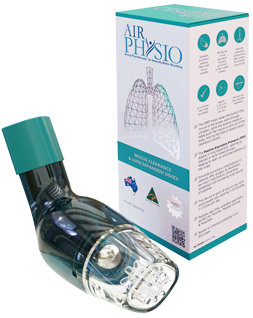
Recent Posts
Sports AirPhysio
IMPROVE YOUR SPORTING PERFORMANCE - Use this 100% Drug Free Device - AIRPHYSIO
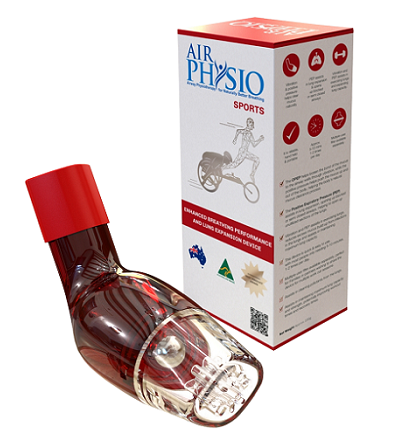
AirPhysio Child
BETTER BREATHING FOR YOUR CHILD - Use this 100% Drug Free Device - AIRPHYSIO
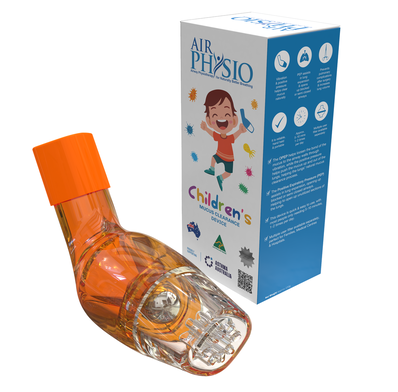
Categories
- asthma (2)
- atelectasis (2)
- bronchiectasis (2)
- copd (3)
- cystic-fibrosis (45)
- featured (10)
- uncategorized (2)


